Nowadays, f/1.8 seems synonymous with entry-level. It’s often a compromise between speed, size/weight, and affordability draped in plastic and aimed at budding photographers looking for their first prime or those wanting something light and inexpensive but still faster than a zoom. Mostly associated with the nifty fifty but also often found in 35mm lenses, either those for crop sensors serving as normal lenses or moderate wide angle for full frame. The Nikkor 35mm f/1.8 DX used to be a very popular lens back in my DSLR days and you could get a used one for around a hundred quid. I briefly had one. I remember there being a slightly newer full frame version as well. Then I totally lost touch with lenses made in this century.
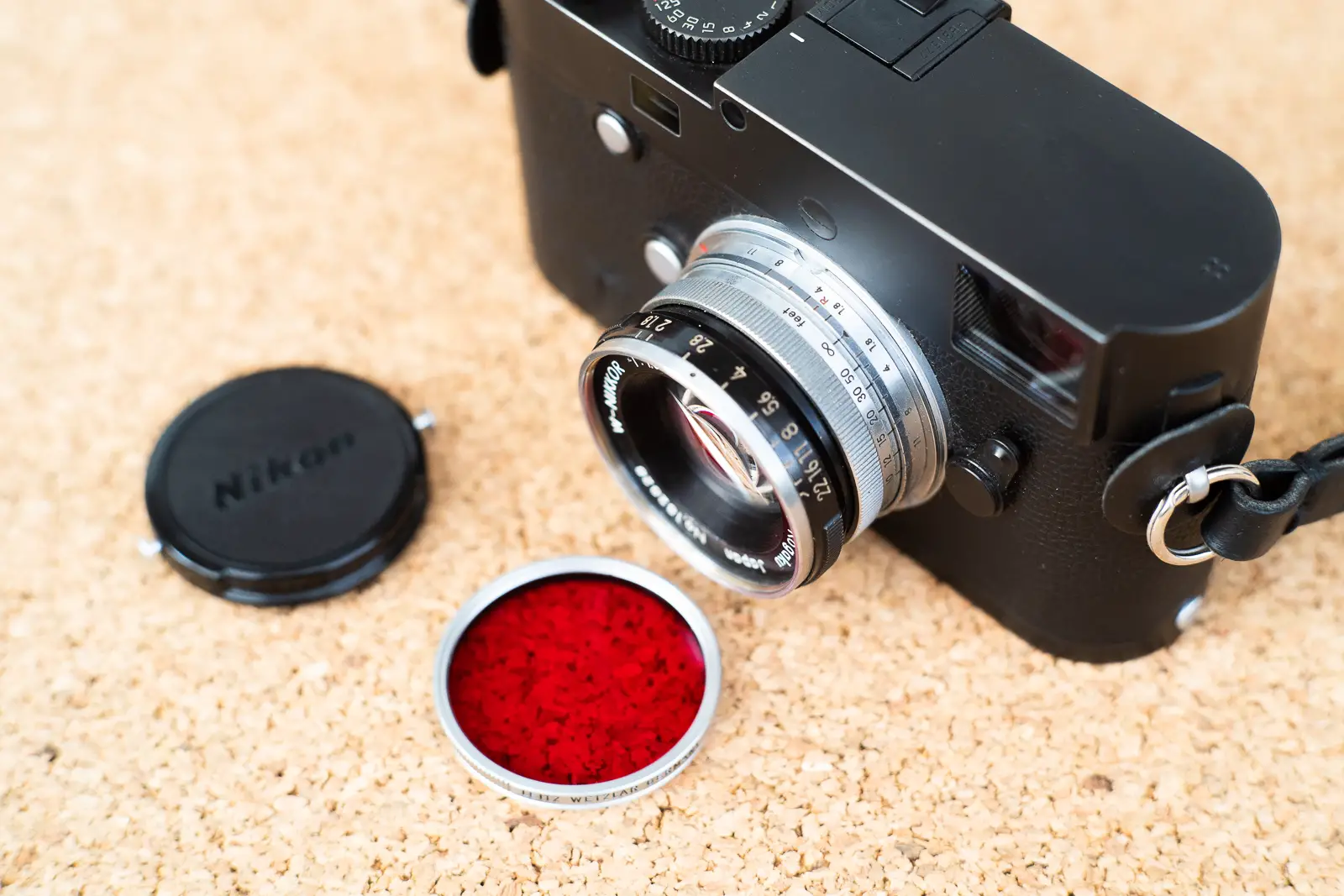
And yet one of the most interesting lenses Nikon has (arguably) ever released is also a modest f/1.8 one – the Nippon Kogaku W-Nikkor 3.5cm f/1.8. However, at the time in the 1950s it was a milestone. Back then Nikon had to push hard and go above and beyond because they still played second fiddle to Leica and Zeiss. And this resulted in some really interesting attempts. Nikon SP deserves a mention as the first rangefinder with a motorised film advance and for having two viewfinders, a 1x magnification one for lenses 50mm and above and one for wide angle. Thanks to these features it was considered the most advanced rangefinder camera of its era. The other noteworthy attempt was the subject of this review, the W-Nikkor 3.5cm f/1.8, the fastest 35mm lens at the time. But it was about more than just bragging rights. The lens has always been consistently praised not for its character or glow or bokeh monster traits but for solid optical quality and performance on par with the likes of Leica. General purpose, practical, reliable, but definitely not boring.
Background
The design of the W-Nikkor 3.5cm f/1.8 was completed by Nikon Senior Manager Azuma Hideo in late 1955 and subsequently released in 1956. As already mentioned, it was at that time the fastest 35mm lens. But more than that, its construction was so groundbreaking that a patent was filed in 1956 and approved in 1959 recognising this as a new type of lens altogether – a large diameter wide angle lens.
It was based on a Xenotar design but featured an additional doublet at the back which was meant to flatten the field as well as improve the spherical aberration and coma, making it a 7 elements in 5 groups construction (a typical Xenotar features 5 elements in 4 groups). It has also been noted that the overly large rear element together with the front element, which was large enough for f/1.4, were meant to decrease vignetting. A feature that is often mentioned in reference to this lens is that it used rare earth (radioactive) lanthanum glass known for its high refractive index, which allows optical elements to be lighter and thinner, and low dispersion, which helps minimise chromatic aberrations. Azuma’s design resulted in a lens that is compact, relatively easy to manufacture, and well corrected in terms of the common optical flaws.
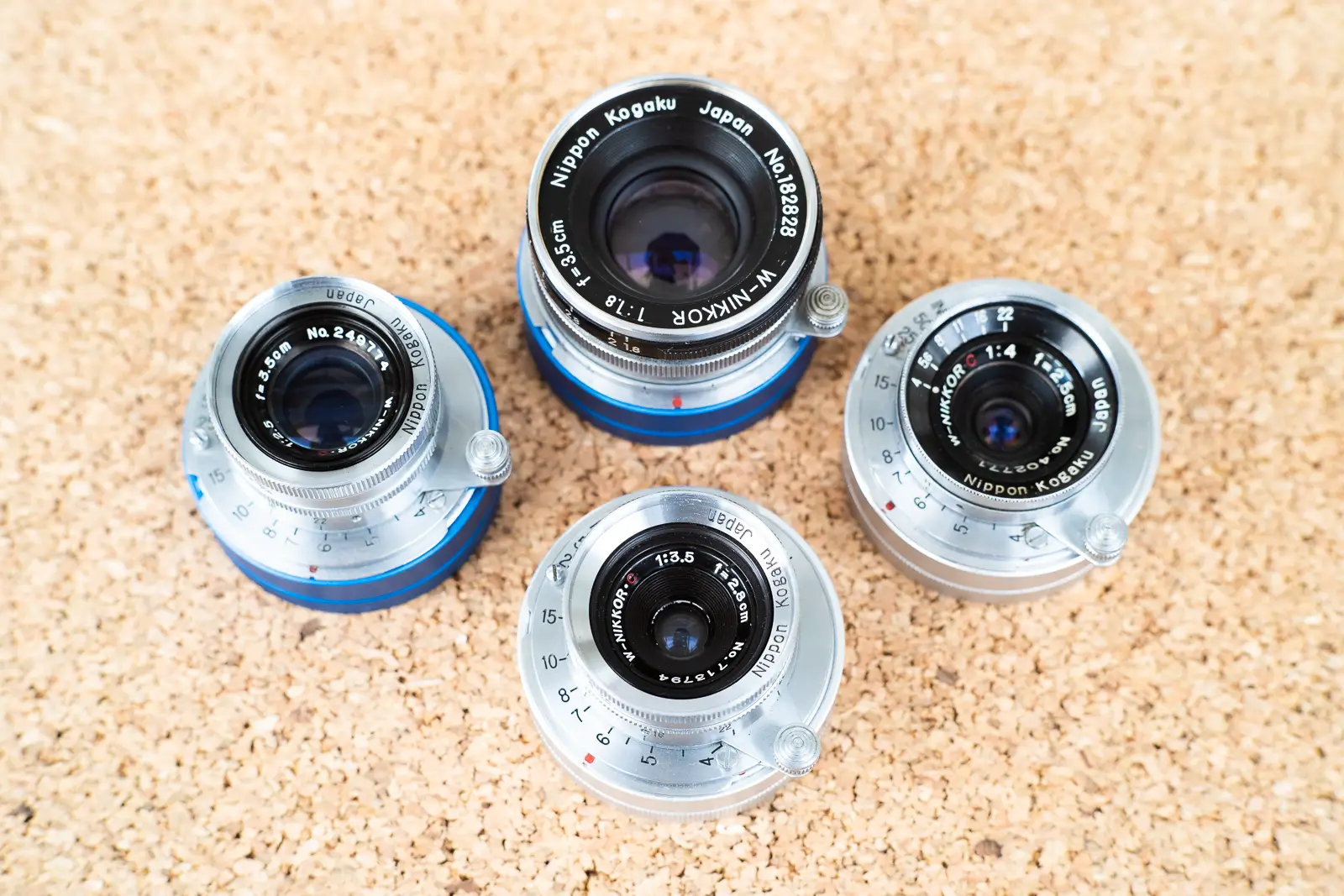
By 1959 Canon have already released both their 35mm f/1.8 and f/1.5 and photography enthusiasts and pros alike were turning their interest towards the SLR so Azuma’s design didn’t propagate at the time, however episode 3 of NIKKOR – The Thousand and One Nights hints that it apparently made a comeback in mirrorless lenses but doesn’t provide details as to which lenses exactly.
Only about 1500 of these lenses were made for Leica Thread Mount, I’m unsure whether this was part of the overall production number of 8000 or on top of 8000 S-mount lenses. My copy is a very late 1960 one without the red C indicating it’s coated as by that time all Nikon lenses featured coating and Nikon deemed it unnecessary to mark them as such.
Build and handling
While the W-Nikkor 3.5cm f/1.8 is not as tiny as some of the other W-Nikkors of that era, is it still very small and compact as well as surprisingly light. The following refers to its LTM version, the S mount had some significant differences. The lens is 26mm long and is only ever so slightly wider than its filter thread of 43mm. It weighs 185g without caps or adapters, making it 28g heavier than the f/2.5 version. This makes it feel a little less solid, not to say it’s not beautifully made, it just has a different ratio of brass to optics.
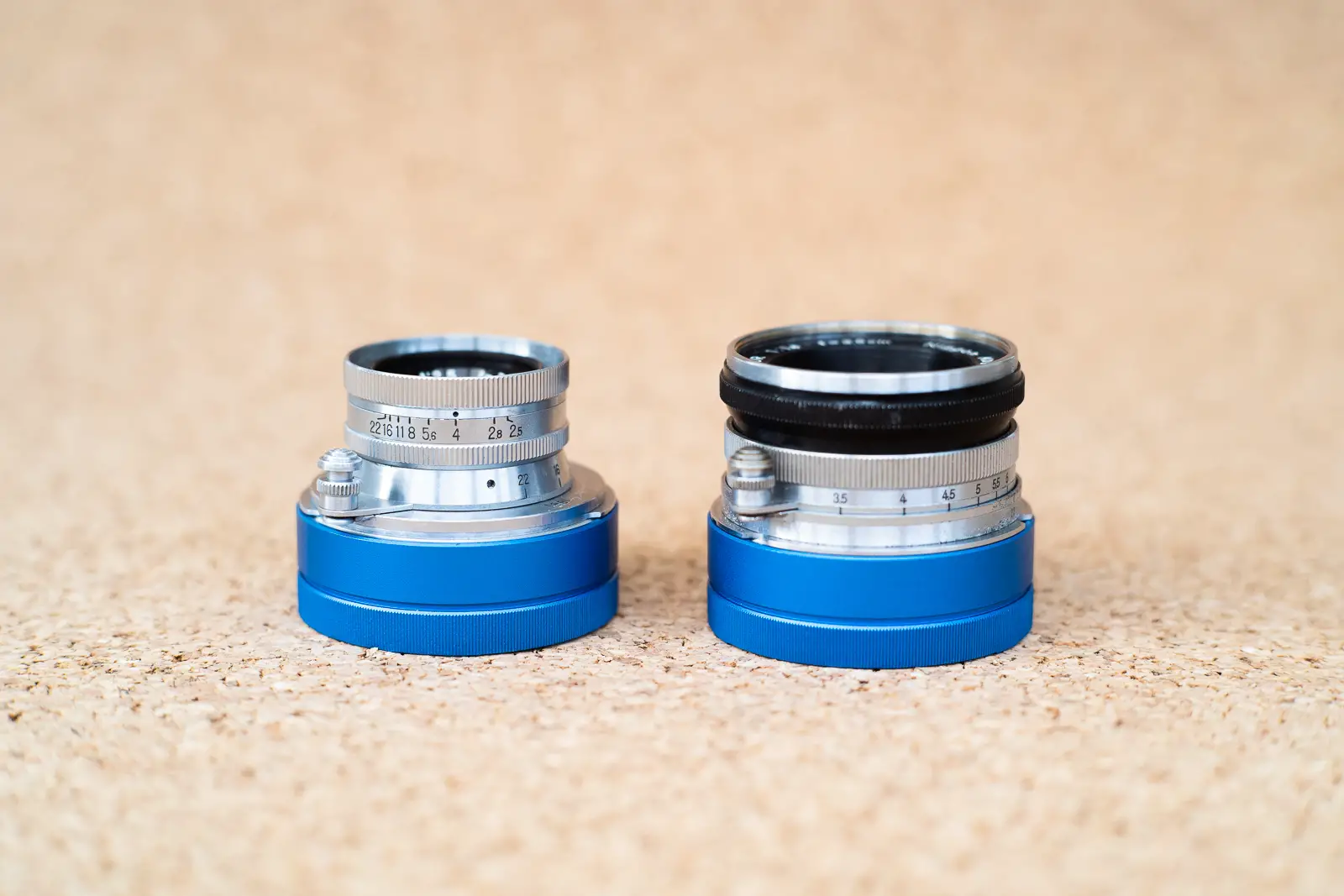
The W-Nikkor 3.5cm f/1.8 has a chrome finish except for the black aperture ring with very large, easy to read lettering. The aperture features 9 straight blades and produces 18-pointed stars under the right conditions. It stops down to f/22 and clicks at full stop intervals. The lens comes equipped with an infinity lock but doesn’t require an adapter with a cutaway. The lock will also easily clear the frame selector lever. The focus throw is ~180 degrees from 3.5ft (1m) to infinity, the focus scale is in feet only. There are depth of field markings as well as an infrared marking.
Handling is typical for many LTM lenses. The infinity lock serves as a handy focusing tab, this is very useful especially in small lenses. The focus and aperture rings rotate independently from one another and on my copy are both easy to turn. The mouth of the lens doesn’t rotate. The lens only invades the very corner of the 35mm framelines when no hood is attached. The filter thread is 43mm which sets it apart from the other 3.5cm W-Nikkors, the f/2.5 and f/3.5, which use 34.5mm threaded filters as well as the Leitz A36 clamp-on ones.
Use on Leica M
As with most screw mount lenses, all that it requires to mount on a digital Leica M body is an LTM to M adapter, either a genuine Leitz or a third party one, in order to bring up the 35mm framelines and correctly focus using the rangefinder. The adapter doesn’t need a cutaway and so it won’t cause issues with live view on newer digital M cameras.
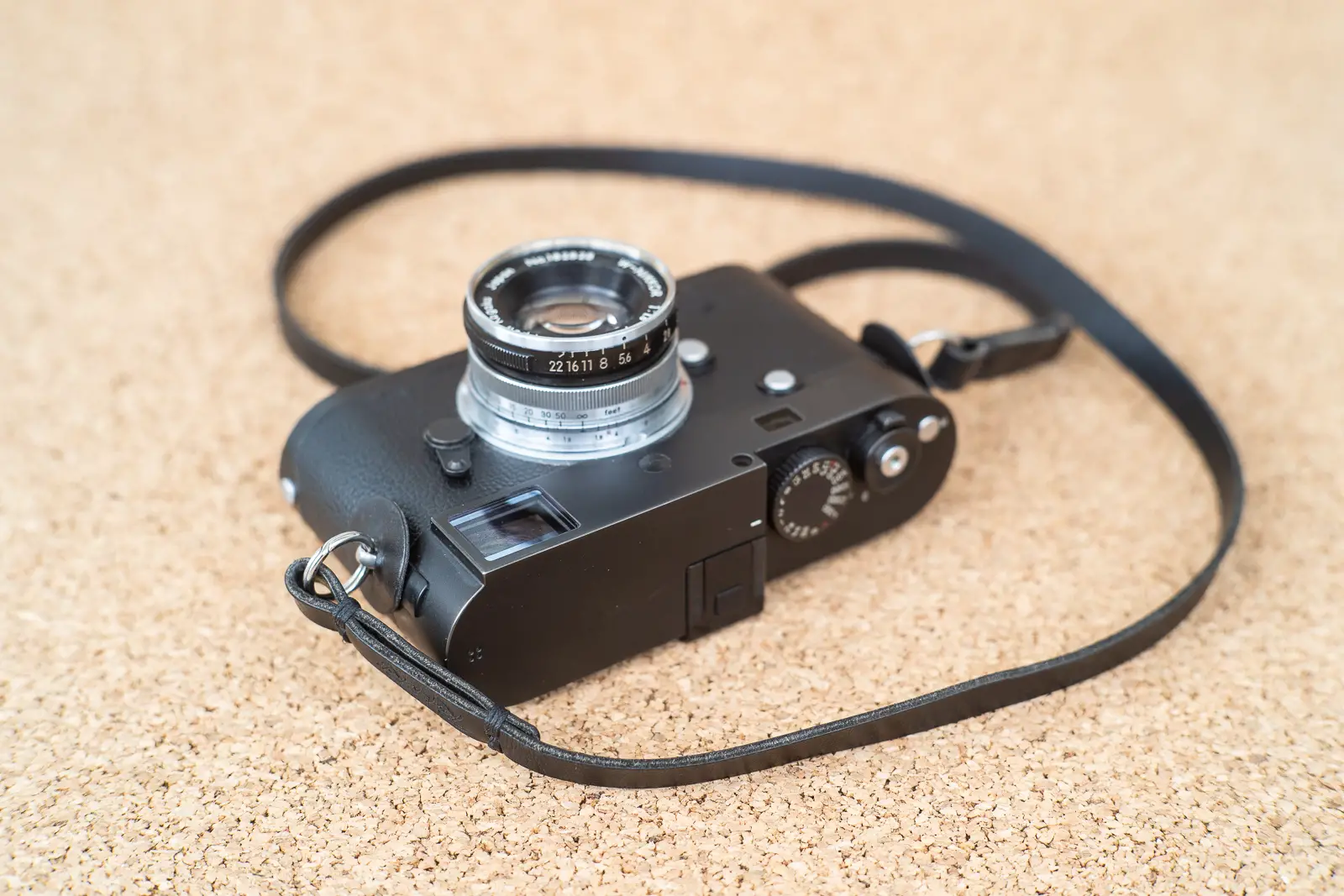
As far as the S mount version is concerned, the Amedeo S to M adapter is officially incompatible with this lens due to its large back element. A good thing about writing reviews of vintage lenses is you can take as long as you want, things aren’t likely to change. However when I started writing this piece I had little to no information regarding the possibility of converting this lens from S mount to Leica. All I had to go on was a photo found online of a converted lens. But just yesterday Skyllaney/Omnar Lenses announced they will have a batch of a dozen lenses converted to M mount. Now let’s see if this motivates me to finally finish writing this before they actually become available. I won’t be surprised if they sell out on the spot too! There certainly is demand for it with the scarcity and prices of the LTM version.
Filters and hood
The S mount version of the W-Nikkor 3.5cm f/1.8 is quite unique in that it has 2 accessory mount threads – 43mm for a filter and 48mm for a hood. The hood thread isn’t actually a thread though and only allows you to mount clip-on accessories. But it’s still a neat way of making the filter and the hood independently attach to the lens. The LTM version on the other hand only features a 43mm thread.
I have been unable to find concrete information regarding the original hood for the LTM lens. They might be out there, unfortunately the Ebay listings just state the hood fits this lens but won’t provide information whether they have a 48mm diameter or a 43mm. I don’t think it matters much as I’m not going to spend $700 on a hood anyway. Abrahamsson made a clone of the dedicated hood for the LTM version (among several other lenses) but it appears to be all sold out. My copy came with a third-party metal screw-in hood, its only engraving being “Made in Japan”. It’s quite sizable and encroaches noticeably into the viewfinder window.
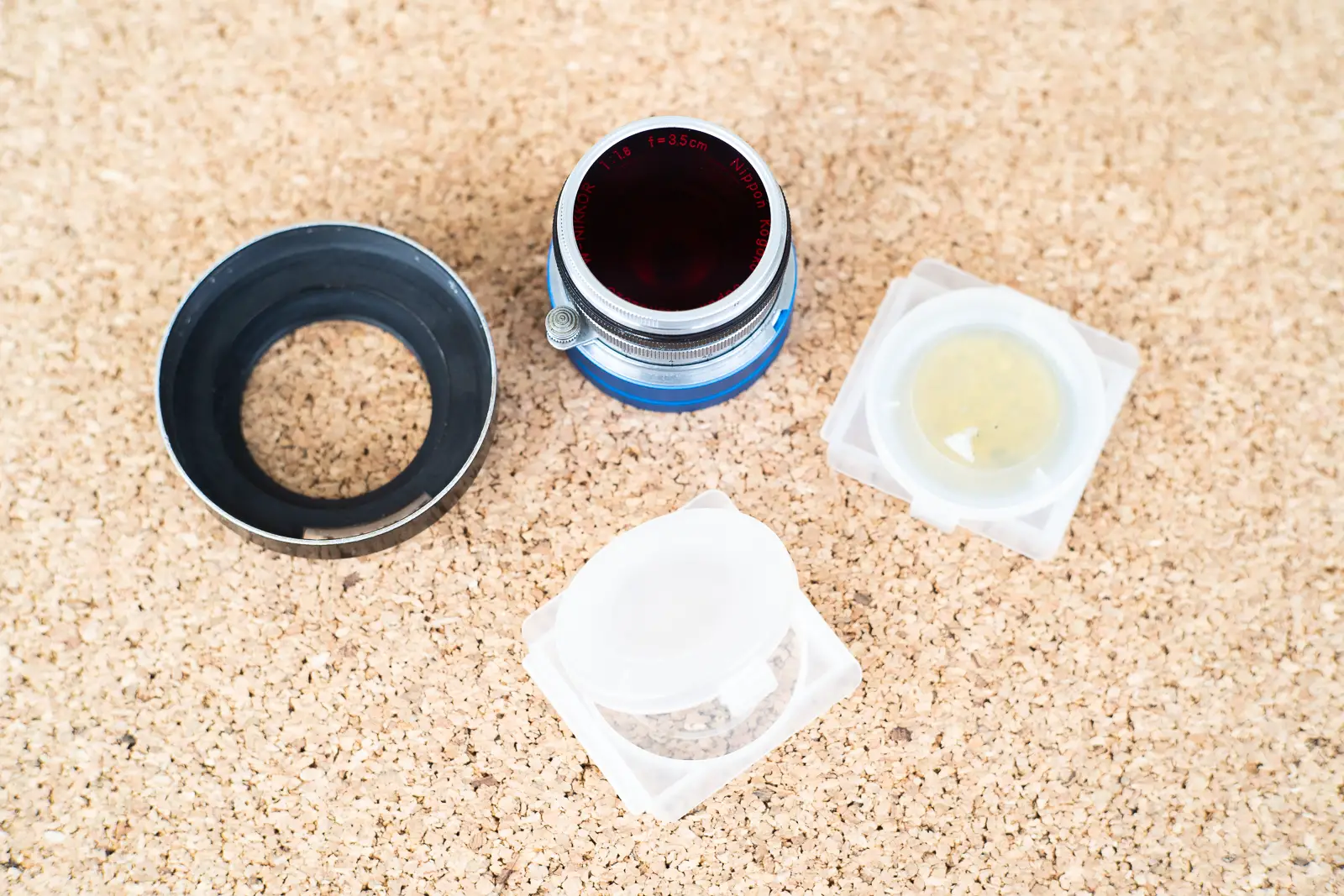
As mentioned, the filter size is a relatively common 43mm (E43). You get to use the high quality filters from Leitz. There is a but here – they (at least the two I have) only feature a male thread but not a female one, making stacking filters or attaching a hood impossible. You’re left with a choice of only using a filter or hood, or using alternative filters (I also have a couple of vintage Kenko ones). Some sort of clamp-on hood would be ideal here but so far I haven’t encountered one that would fit.
Image quality
Once again, the following observations aren’t a result of any sort of rigorous tests but simply my experience with the lens. I will unavoidably be drawing comparisons with the other W-Nikkor 3.5cm in my possession, the f/2.5 one.
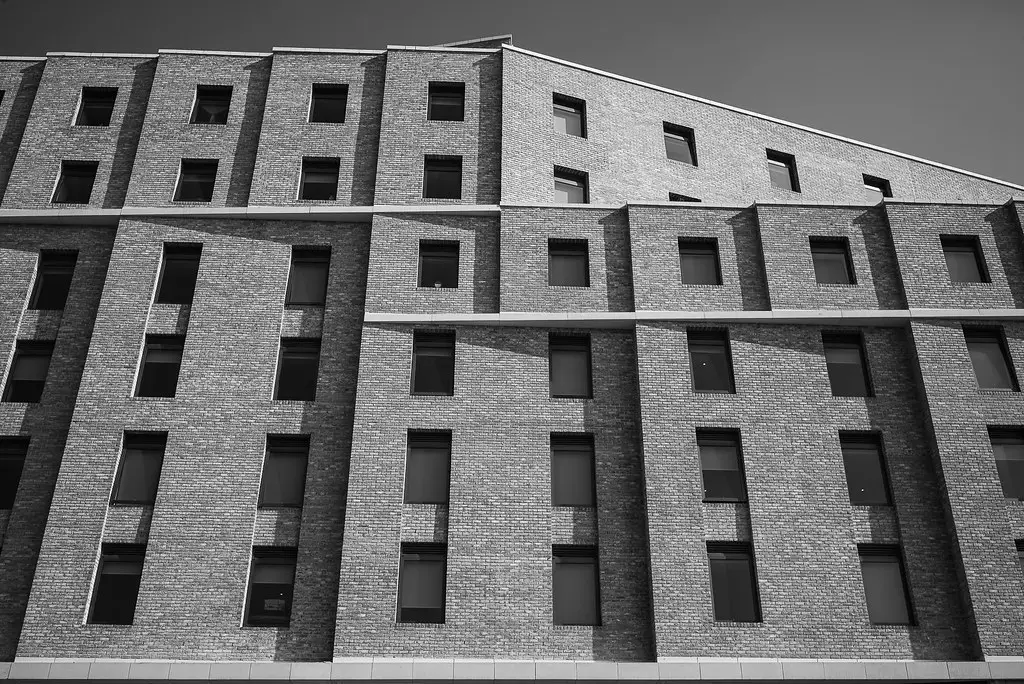
In terms of sharpness I rarely stop the W-Nikkor 3.5cm f/1.8 down past f/5.6 at which aperture it is very sharp throughout the frame. Definitely an improvement over the f/2.5. Both are sharp enough in the centre but the f/1.8 is visibly superior on the sides of the image.
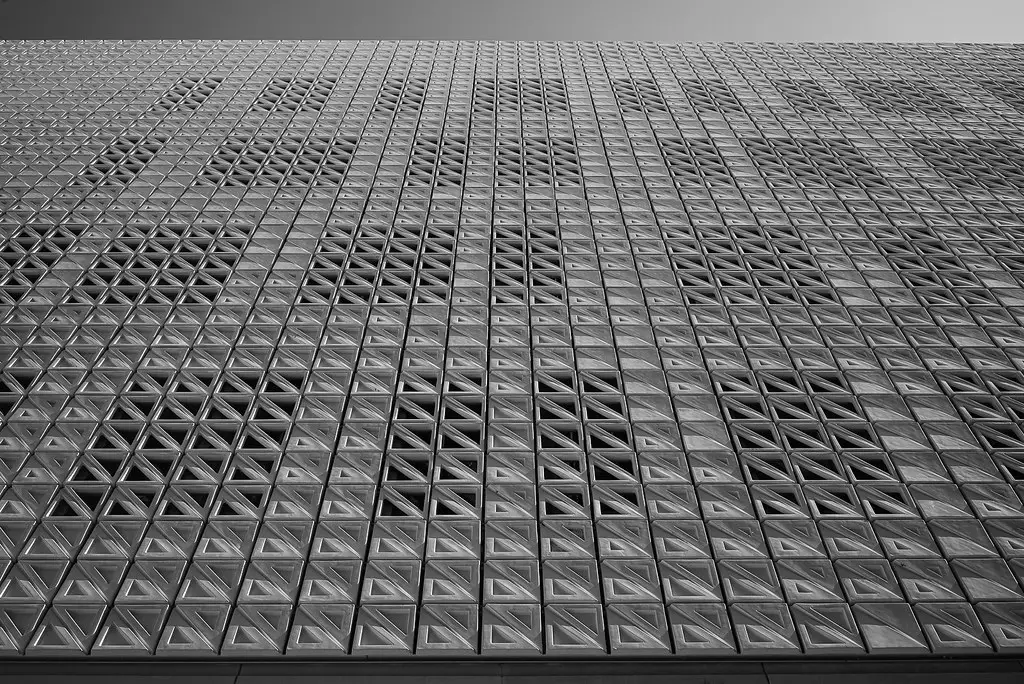
Wide open the W-Nikkor 3.5cm f/1.8 is sufficiently sharp for selective focus type images. Focus is critical as areas just out of it tend to have this sort of woolly look so if you miss it by a little bit the subject might end up looking unpleasant. Past that bit of woolliness the bokeh is very pleasing, slightly bubbly at times, not very swirly, not distracting but full of vintage character. There is a bit of a field curvature present, especially close-up, which contributes to decreased sharpness on the sides of the image when shooting at maximum aperture.
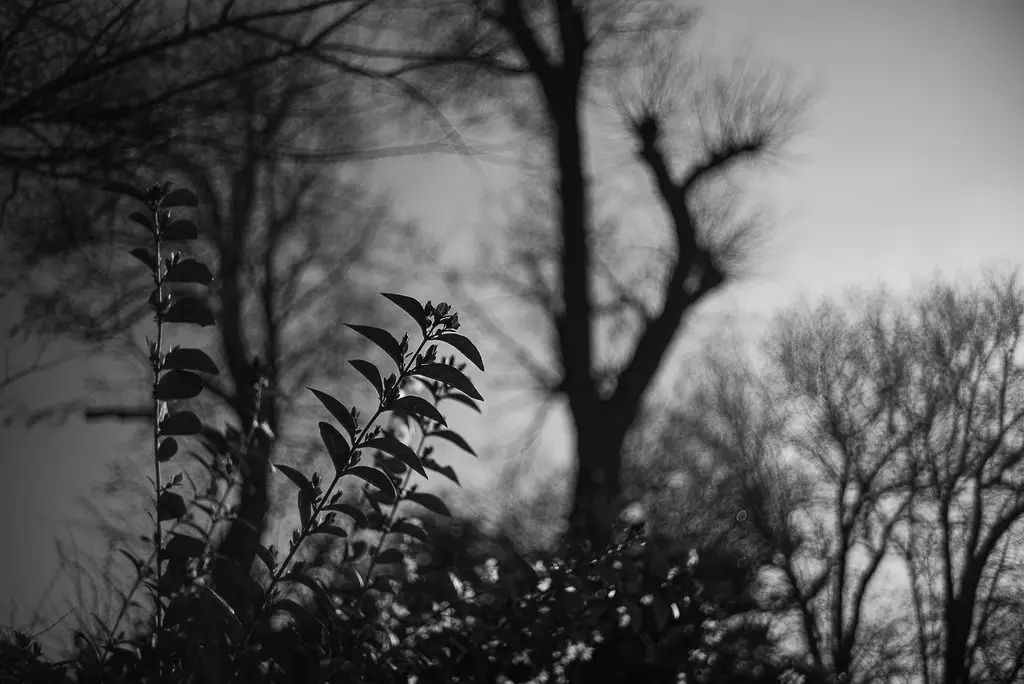
Contrast isn’t very high but it is far from low. Subjects rich in detail and textures look crisp and well defined. This works particularly well in black and white but more on that below. As someone who enjoys shooting in high contrast situations, I like a medium contrast lens as I feel it gives me a little more latitude to work with.
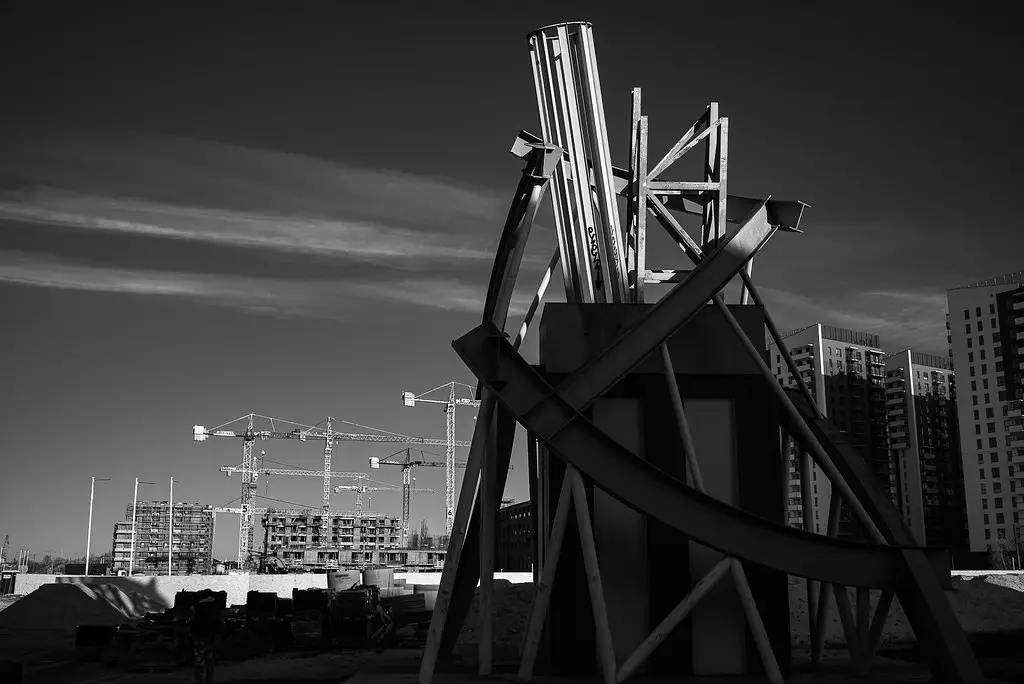
As it is the case with all my W-Nikkors, the 3.5cm f/1.8 is excellent at producing images with low distortion and perfectly straight lines, including at the very edges of the image. This combined with the high resolving power when stopped down and the good contrast makes it a great lens for architecture photography.
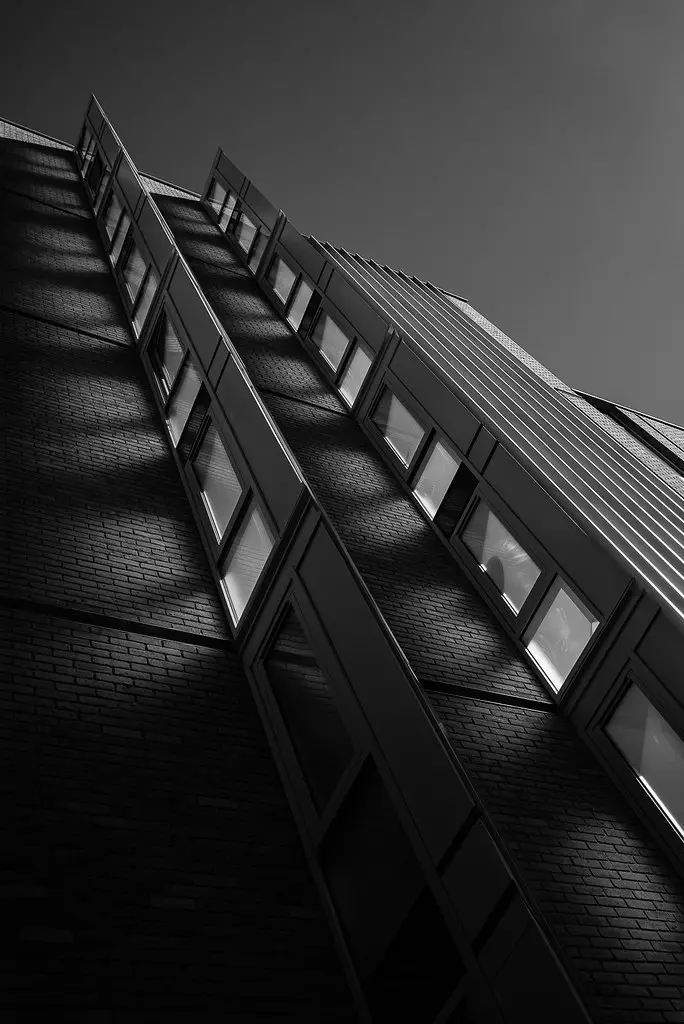
Those who don’t enjoy vignetting too much will be glad to hear it is being well controlled on this lens. The front element is large enough for an f/1.4 lens and apparently the lens was designed to be slower than that precisely because the designer wanted to keep the vignetting under control.
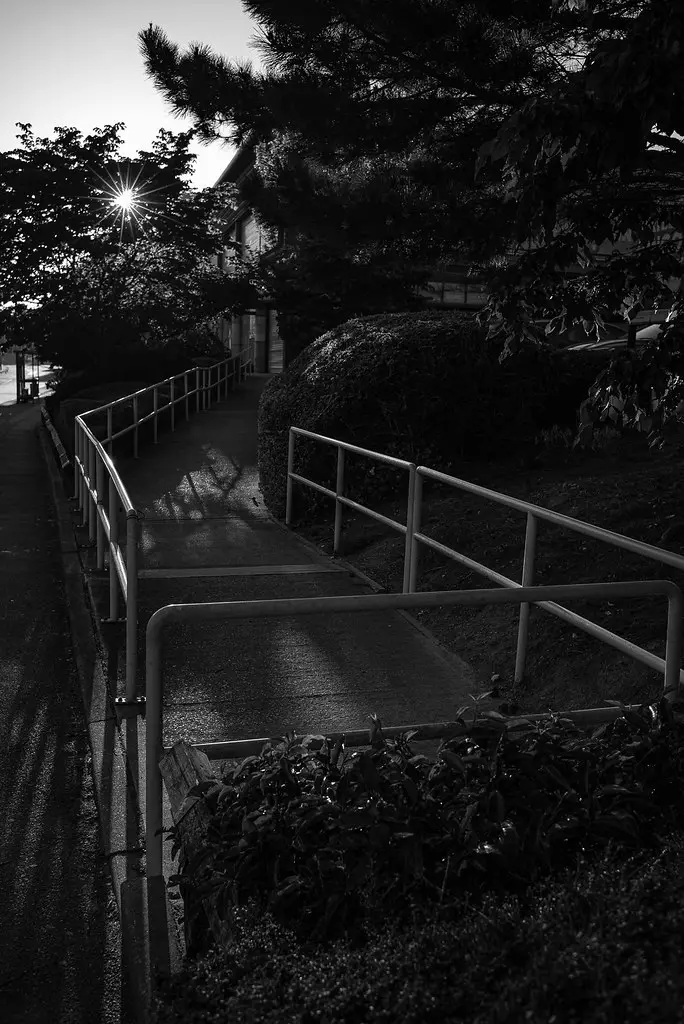
There is one area where the f/2.5 lens is superior to the f/1.8 – resistance to flare. Unlike in the case of its smaller brother, the 3.5cm f/1.8 tends to produce quite a bit of it even when stopped down. You can use a hood, embrace the flare, or watch out for the sun’s position in and just outside of the frame.
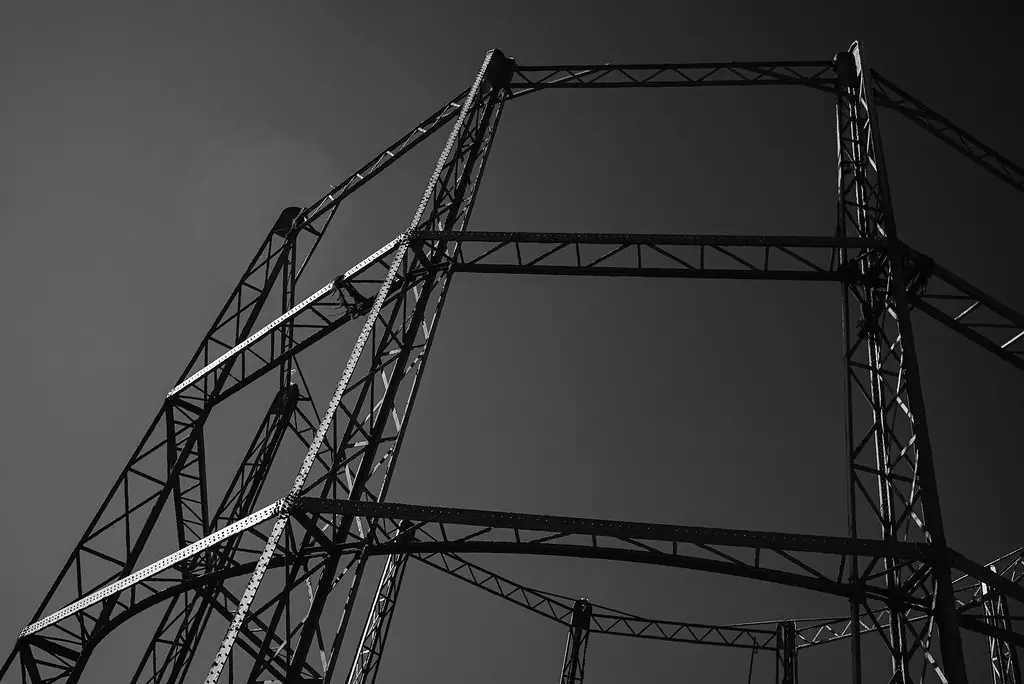
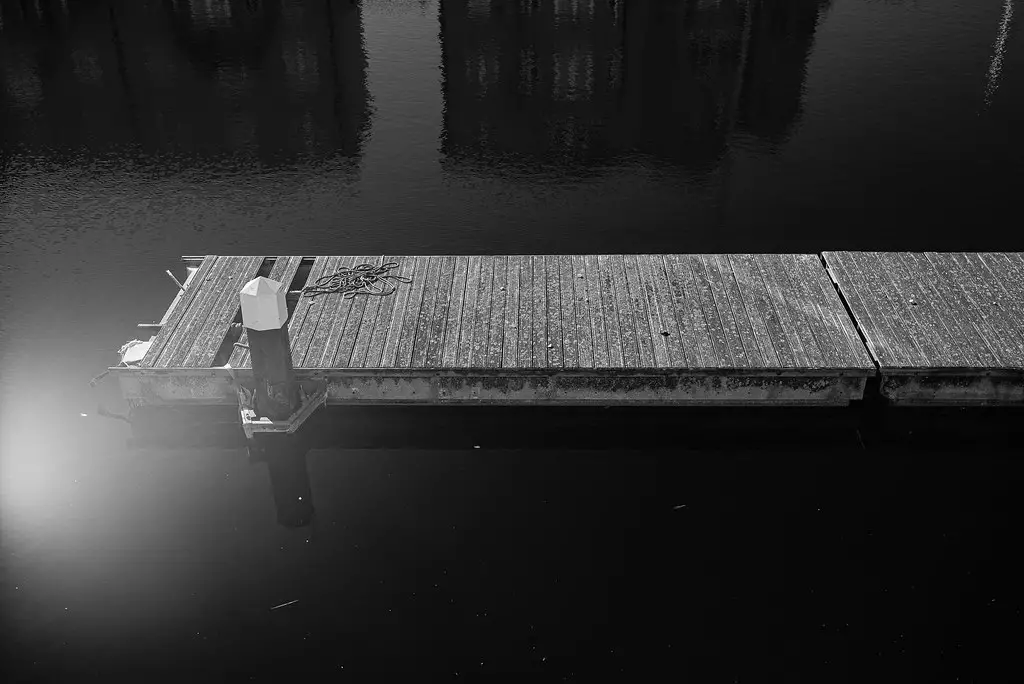
Performance in colour
The colours produced by the W-Nikkor 3.5cm f/1.8 are not overly vibrant or saturated but they are very natural and accurate. Might be a little too subdued for some but for me they work really well. The main reason why I got a colour camera after years without one was to deliver more realism, especially when travelling. I wanted to be able to present what the sights and cityscapes really looked like as opposed to my impression of them through the monochrome sensor.
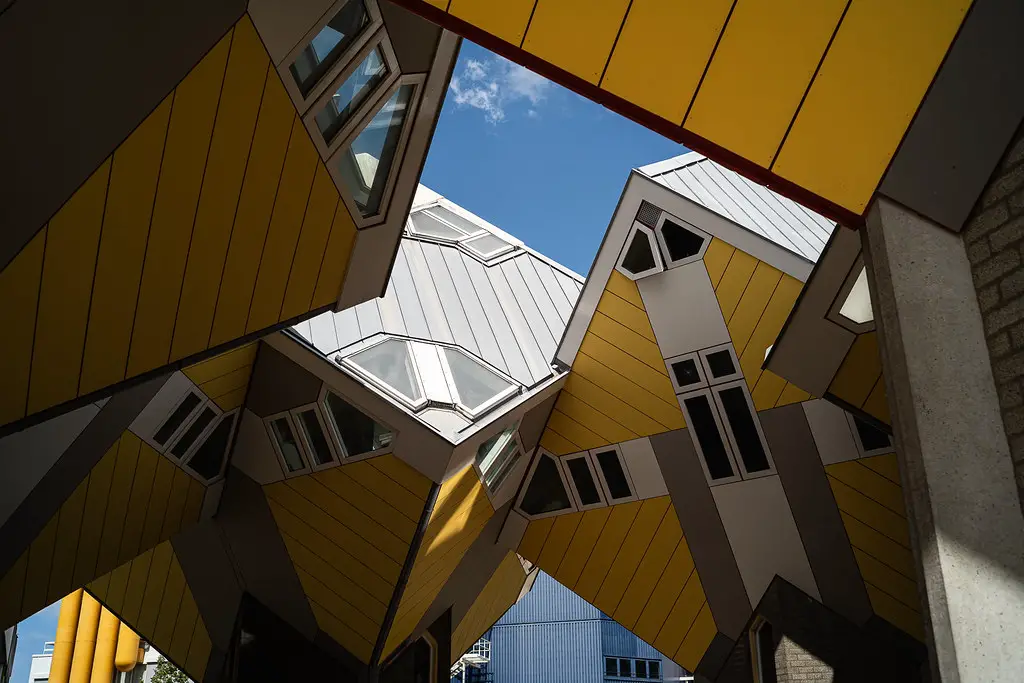
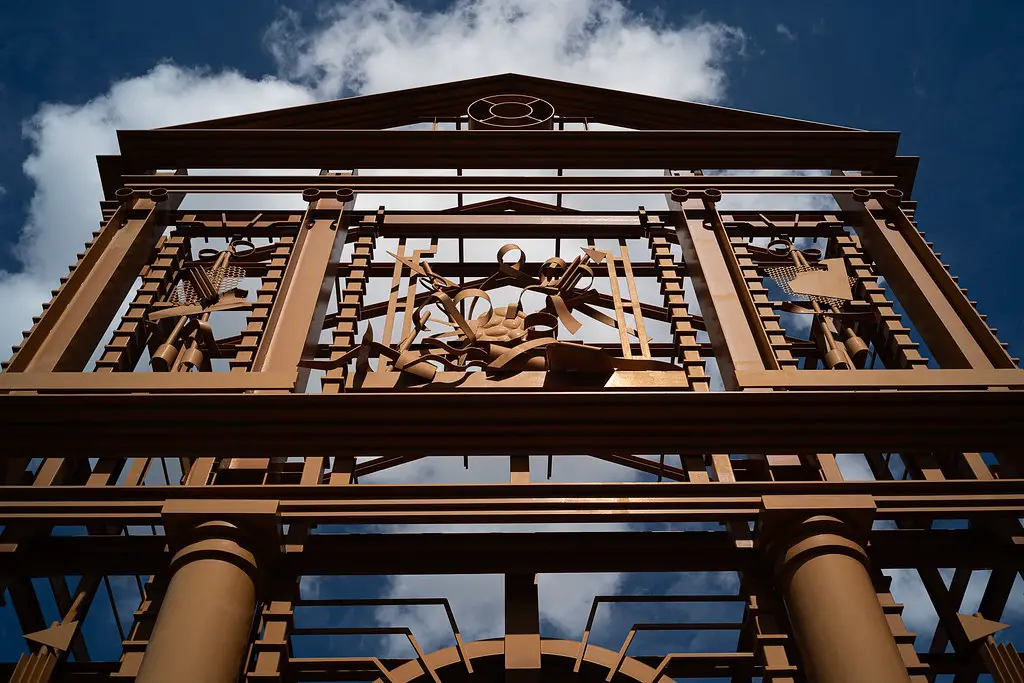
Despite not having much experience with the camera and none with the W-Nikkor 3.5cm f/1.8 on it, my city break to Rotterdam with the Sigma FP resulted in a bunch of shots that made me glad I got to register them in colour, despite having the Monochrom with me as well. And the lens turned out to be a reliable companion.
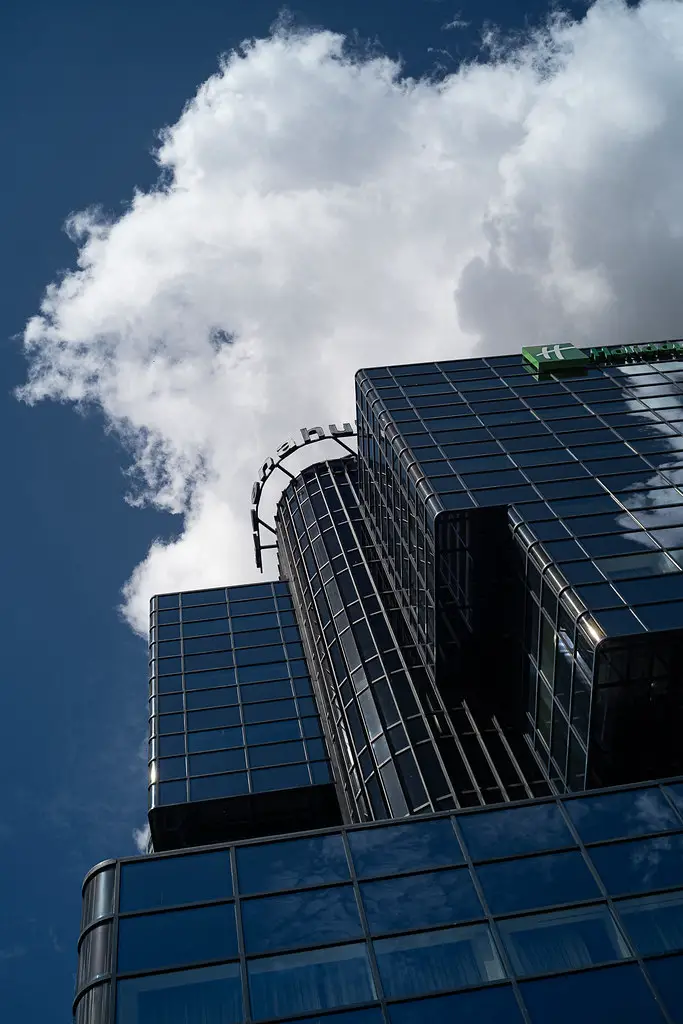
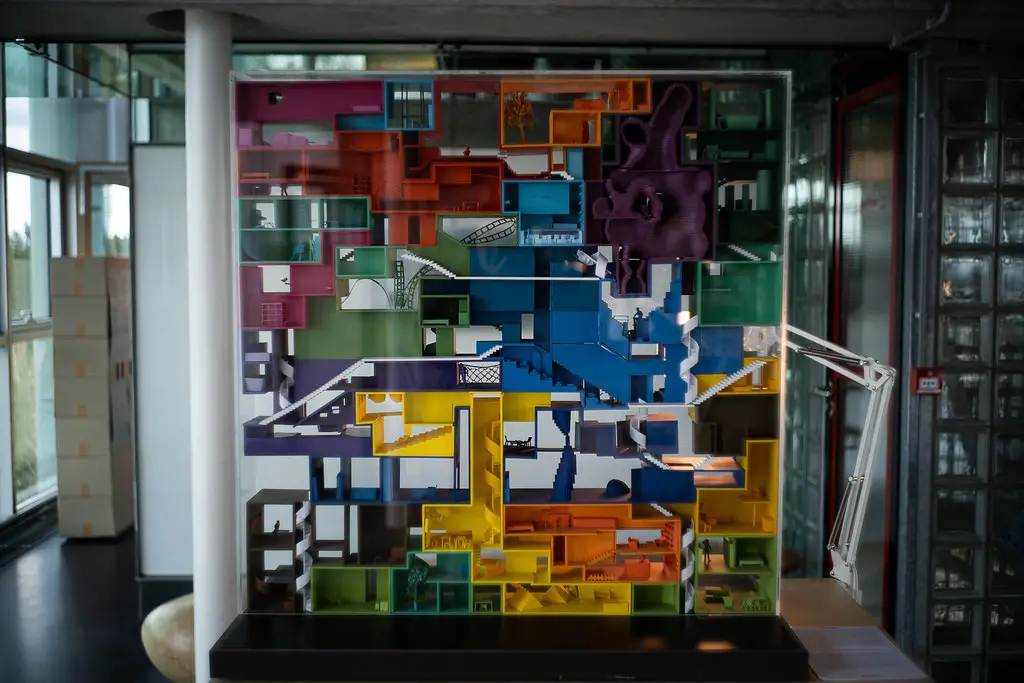
Performance in black and white
I have done black and white photography almost exclusively for several years and even though this year I finally acquired a colour interchangeable lens camera as well as pursued a side fling with infrared, nothing still excites me more than the Monochrom and a red filter. The W-Nikkor 3.5cm f/1.8 has quickly become my favourite and most used lens.
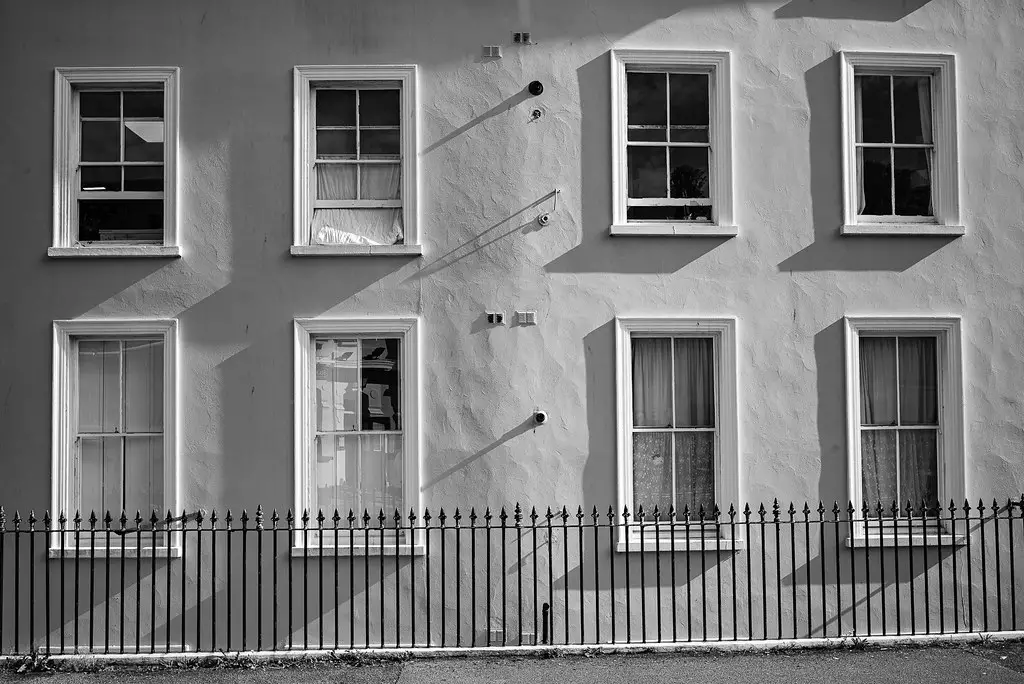
Due to its medium contrast the W-Nikkor 3.5cm f/1.8 works very well in high contrast situations coupled with the red filter. It helps to not clip the shadows in low key photography but delivers just the right amount of punch. Areas in the highlights come to life with their fine detail and texture and shadows subtly melt away creating a dark canvas.
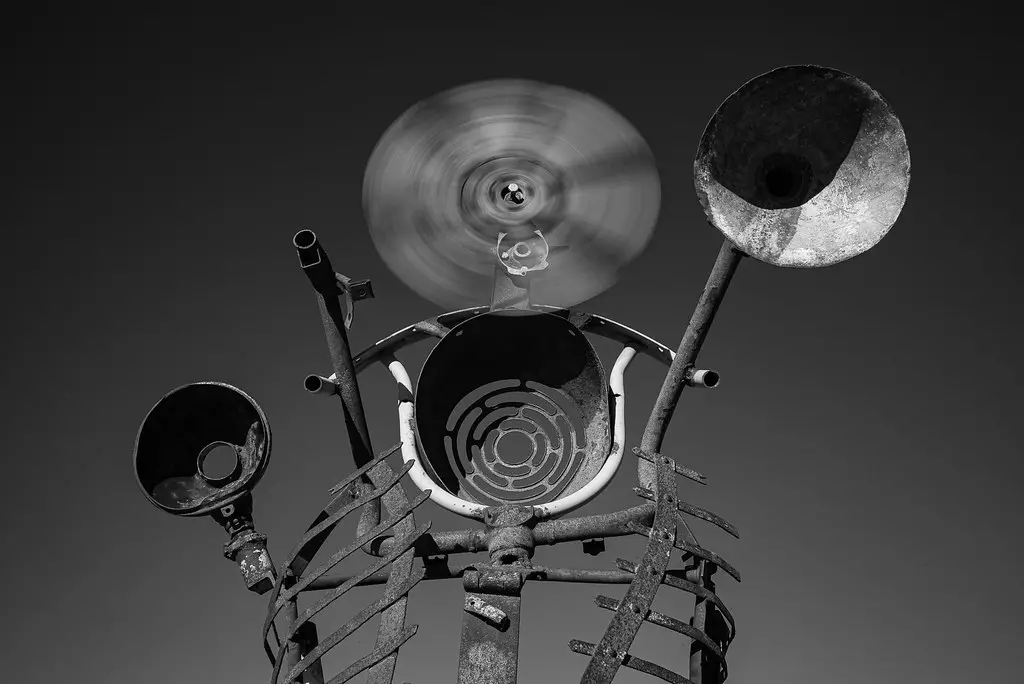
Performance in infrared
This is another new section as far as my reviews go since I have only recently put my hands on a dedicated infrared camera, the Fujifilm X-Pro1 converted to 850nm. This being a crop sensor body, naturally I first reached for the widest lens I had that was safe to mount on it, the W-Nikkor 2.5cm f/4. My Leitz Super-Angulon 21mm f/4, contrary to some information I found online, won’t mount as it protrudes too deep into the camera body.
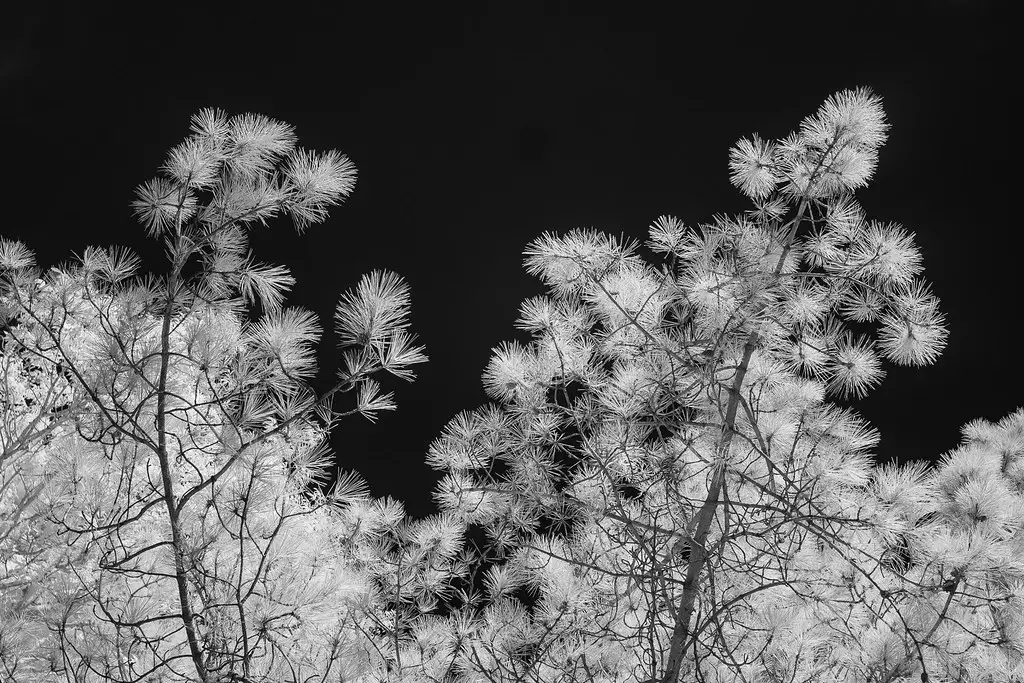
Unfortunately, as it sometimes happens with infrared, the performance of this lens was poorer than in visible light, especially on the sides of the image. At first I thought it was due to my very limited experience with this camera and with infrared, the fact it’s a 10-year-old sensor, focusing being a bit of a guessing game, and the conversion itself which might not have been top quality. The lens also generally lags slightly behind my other W-Nikkors in terms of image quality. It produced ok results in web-size but looking at the images at full size they left a lot to be desired. It made sense, even for experiment’s sake, to try a lens that was definitely a great performer. And so I reached for the subject of this review.
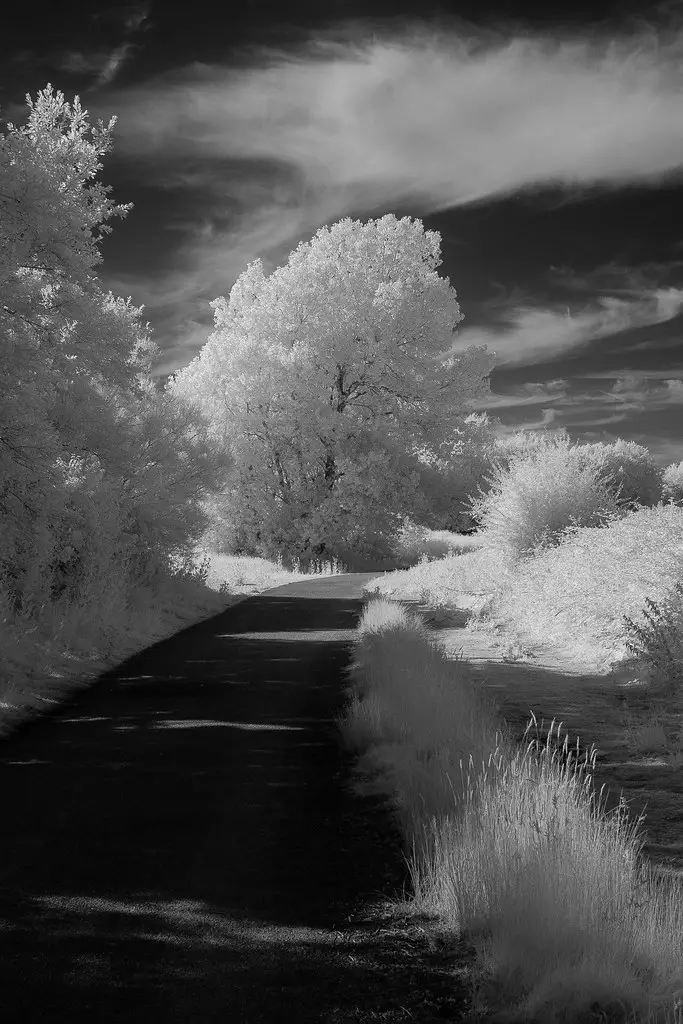
Still keeping in mind the age of the sensor, the unknown quality of the conversion, and the difficulty of getting the focus right, the W-Nikkor 3.5cm f/1.8 offered a visible upgrade in terms of the amount of detail in the photos. The downside here is it acts as a normal lens on an APS-C sensor. Provided the focus was set correctly, it produces images that are sharp and contrasty. Not quite as crisp as those from the Monochrom but it was still a significant improvement over the 2.5cm and any other lens I’ve tried on the Fuji so far.
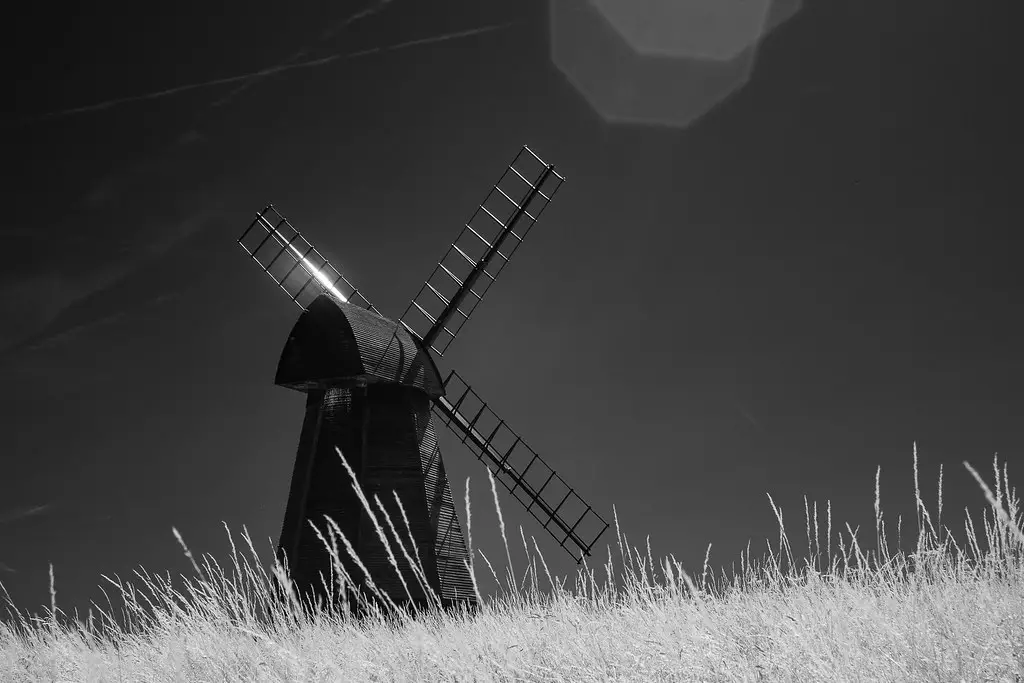
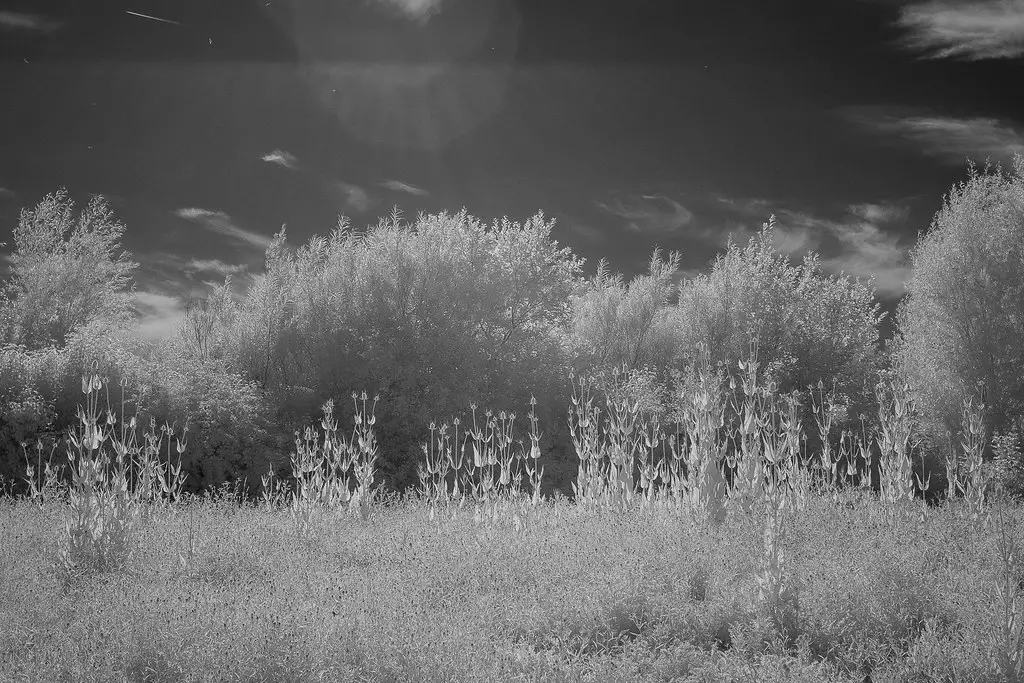
The already mentioned issue with flaring is even more pronounced when shooting in infrared. This might be related to the conversion as I suspect the filter installed on the sensor might make this matter worse. At times it even produces ghosting along bright edges on a dark background which I guess would confirm it’s an issue with the conversion rather than with infrared itself.
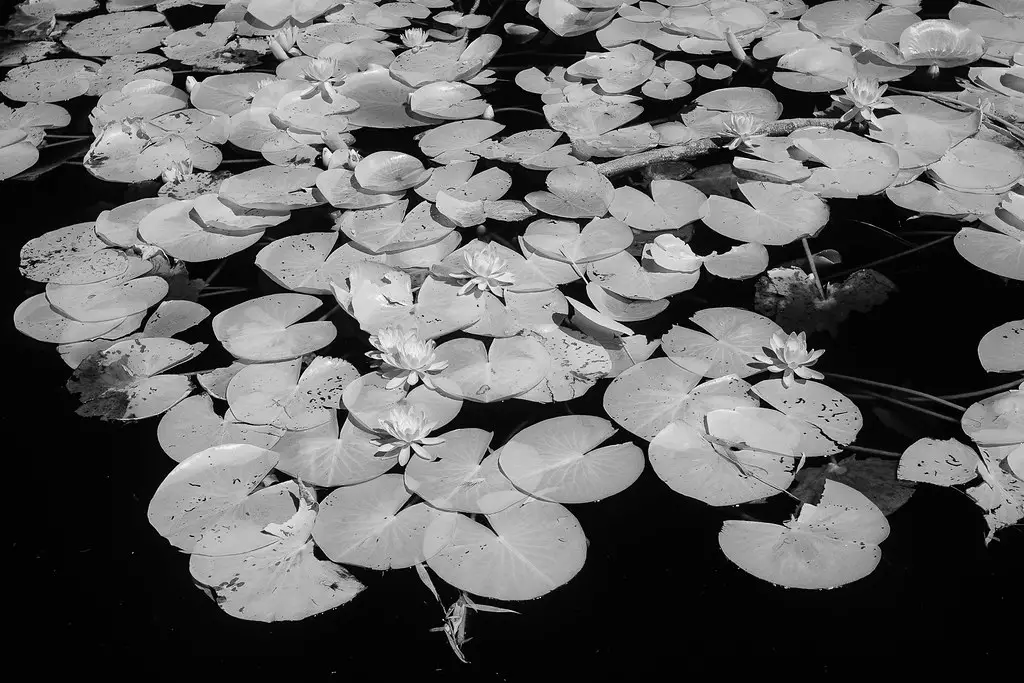
Final thoughts
It’s difficult to review lenses that have a cult status, and the W-Nikkor 3.5cm f/1.8 certainly does (in an obscure kind of way). In more than one source it was named the best 35mm rangefinder lens of its time and one of the best to this day as well as one of the classic Nikkor lenses overall. My aim was to do it justice and not get carried away but also not end up downplaying the qualities of it. I don’t know whether it’s the best lens, I haven’t used all of the lenses (not for the lack of trying). But if the number of shots that made it onto my Flickr in the mere few months I’ve had it is any indication, it is definitely my best lens. Not to put quantity over quality, it is still important that a lens inspires you to go out there and doesn’t turn your hobby into a chore.
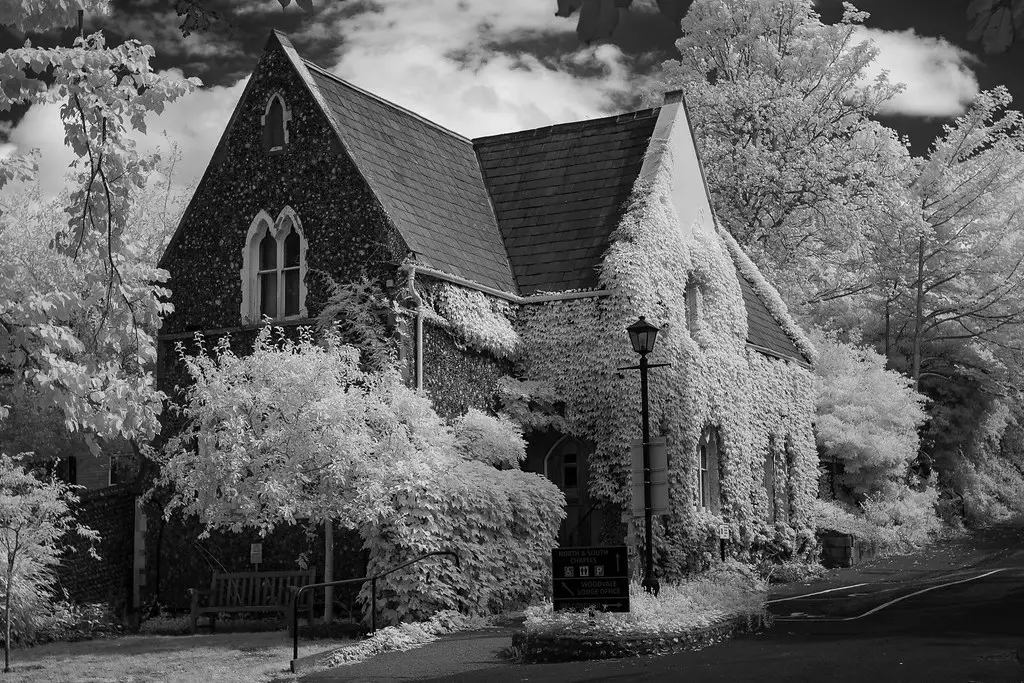
The W-Nikkor 3.5cm f/1.8 is practical and versatile, perfect for travelling and other circumstances that don’t leave a lot of room for fiddling with changing lenses and taking your time. When do-overs are out of the question and you can only take a closer look at your shots when you’re back home you need a lens that is dependable. But it is also incredibly fun and allows for plenty of fast(ish) lens photography nonsense. It’s got tons of character wide open but stopped down it quickly starts producing clean, sharp, and contrasty shots with low distortion and vignetting. 35mm isn’t even a focal length I particularly enjoy but I feel like, with the exception of short breaks to test other lenses, I have barely stopped shooting it since I got it.
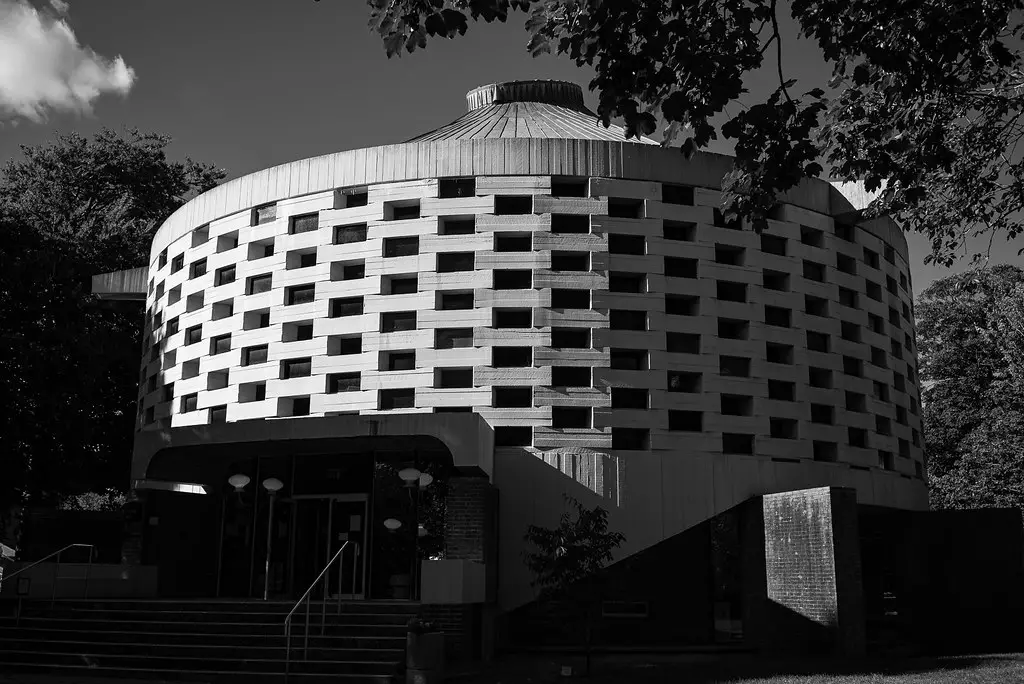
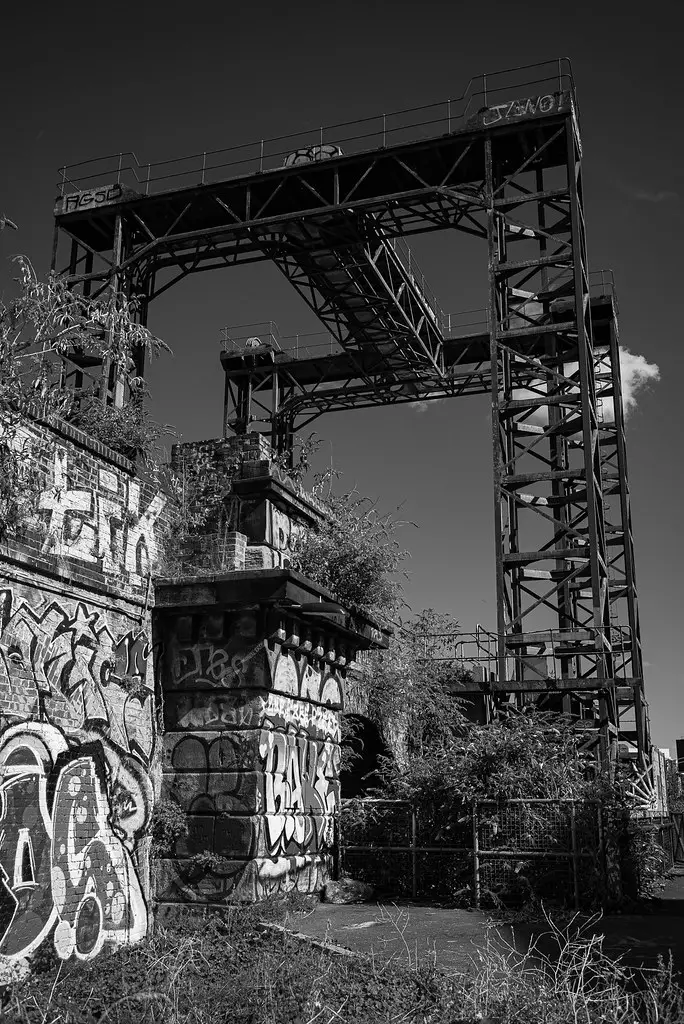
For the past few months I have been trying to keep my GAS in check and this lens certainly helped. I often feel the only reason I take it off the camera is to put it on another camera. It was a stroke of luck that another lens I never particularly liked and recently sold after it shot up in price allowed me to finance the purchase of the illusive W-Nikkor 3.5cm f/1.8 in LTM. Otherwise it would have been very difficult to justify the expense. It is however helping me save money moving forward as it freed me from the daily habit of checking Ebay. The W-Nikkor 3.5cm f/1.8 is absolutely a great lens but if I didn’t get the opportunity to acquire it, I would have been perfectly happy with the f/2.5, or with any of the W-Nikkors of that era for that matter. They are all keepers in my book.
Share this post:
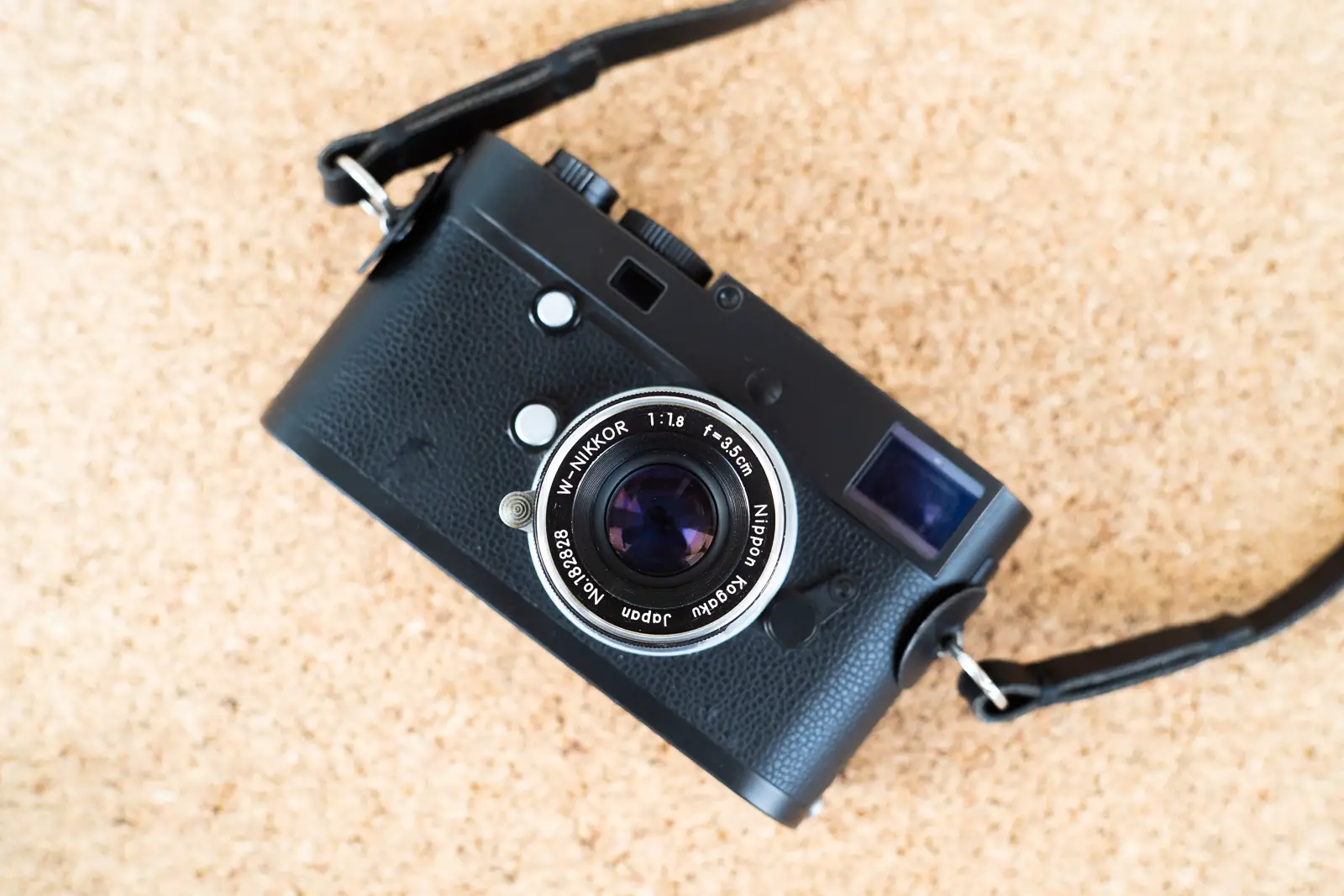








Comments
Richard de Bulat on Nikon (Nippon Kogaku) W-Nikkor 3.5cm f/1.8 LTM Review – a GAS killer – By Agata Urbaniak
Comment posted: 19/12/2022
Comment posted: 19/12/2022
Alex Kreisman on Nikon (Nippon Kogaku) W-Nikkor 3.5cm f/1.8 LTM Review – a GAS killer – By Agata Urbaniak
Comment posted: 19/12/2022
Also, Ir BW pictures is so poetic, i just love it!
Happy shooting
Comment posted: 19/12/2022
Kodachromeguy on Nikon (Nippon Kogaku) W-Nikkor 3.5cm f/1.8 LTM Review – a GAS killer – By Agata Urbaniak
Comment posted: 19/12/2022
Comment posted: 19/12/2022
Cenk Erbay on Nikon (Nippon Kogaku) W-Nikkor 3.5cm f/1.8 LTM Review – a GAS killer – By Agata Urbaniak
Comment posted: 20/12/2022
What do you think of Sigma FP as a M mount lens platform?
Comment posted: 20/12/2022
Wouter on Nikon (Nippon Kogaku) W-Nikkor 3.5cm f/1.8 LTM Review – a GAS killer – By Agata Urbaniak
Comment posted: 20/12/2022
But darn, you make me want a Monochrom now.....
Jay Dann Walker on Nikon (Nippon Kogaku) W-Nikkor 3.5cm f/1.8 LTM Review – a GAS killer – By Agata Urbaniak
Comment posted: 22/12/2022
My beloved Nikon D 85 1.8 short telephoto, currently on one of my pair of F65s loaded with one of my last extant rolls of Kodak Panatomic X which I bought in the 1980s and sadly have now all used up, would surely disagree.
So be it. Most of my lenses are f/2.0 or f/2.8, and I reckon I take as good photos as any stock photographer around can do and does. So there!!
And PS your images are nothing short of wonderful, or if I may go so far as to stretch the superlatives to their utmost level, superb. More, please.
Dann in Melbourne
Comment posted: 22/12/2022
Paul on Nikon (Nippon Kogaku) W-Nikkor 3.5cm f/1.8 LTM Review – a GAS killer – By Agata Urbaniak
Comment posted: 30/12/2022
My only comment is this lens never fails to put a huge smile on my face whenever I use it.
I've managed to find a couple of period Nikon filters, but the original square hood is overpriced. Yours looks a better hood.
Gary Smith on Nikon (Nippon Kogaku) W-Nikkor 3.5cm f/1.8 LTM Review – a GAS killer – By Agata Urbaniak
Comment posted: 11/04/2024
Rollin on Nikon (Nippon Kogaku) W-Nikkor 3.5cm f/1.8 LTM Review – a GAS killer – By Agata Urbaniak
Comment posted: 18/12/2024